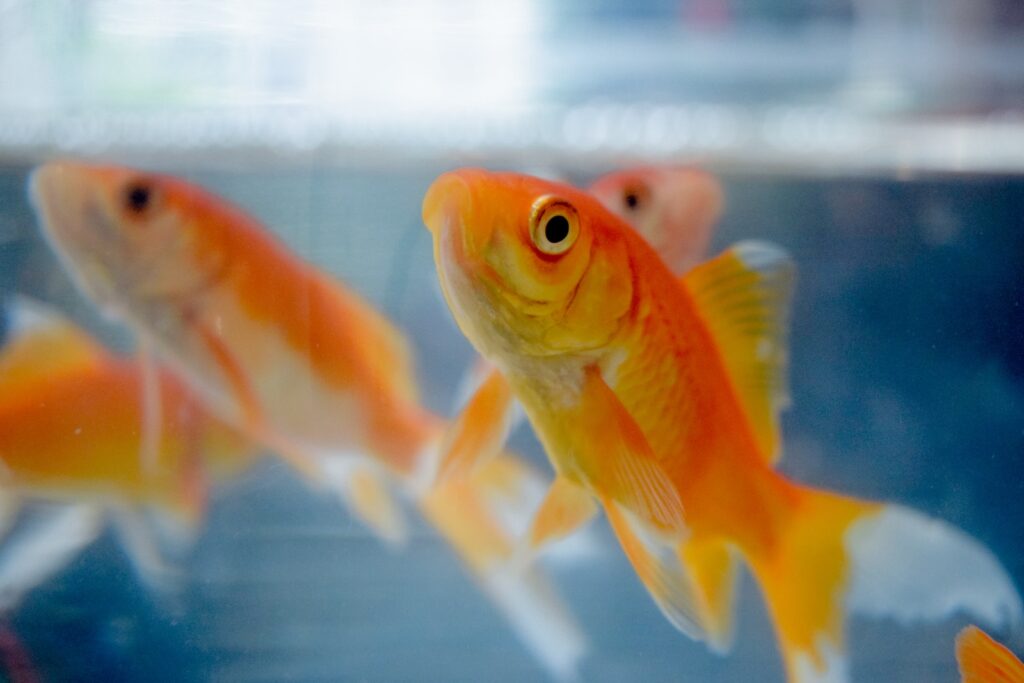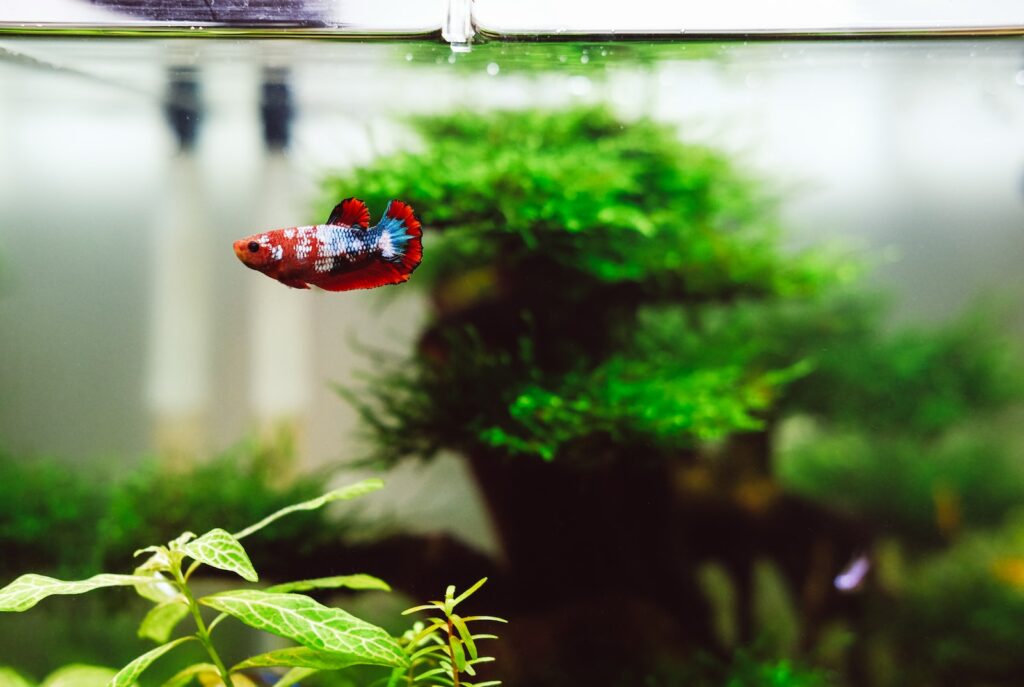The Grand Introduction: Why Freshwater?
Embarking on the journey of setting up an aquarium is both exciting and therapeutic. When it comes to aquariums, freshwater setups are often the go-to choice for many, especially for beginners. It’s akin to binge-watching your favorite show on Netflix, but instead, you’re immersing yourself in the vibrant and soothing world of freshwater fish.
- Cost-Effective: One of the most appealing aspects of freshwater aquariums is their cost-effectiveness. Saltwater tanks can burn a hole in your pocket with their expensive equipment and marine livestock. In contrast, freshwater setups are more budget-friendly, ensuring you get more bang for your buck.
- Maintenance: Another perk of going freshwater is the relatively easier maintenance. Unlike saltwater tanks, which can be more demanding, freshwater aquariums tend to have fewer issues with troublesome algae. The result? A smoother learning curve for beginners and fewer green headaches!
- Variety: Freshwater tanks are a canvas of colors and species. From glistening neon tetras to the gracefully floating betta, the variety ensures that your aquarium remains a dynamic visual spectacle. With so many species to choose from, there’s always a new fish to discover and adore.
- Space-friendly: Not all of us have the luxury of expansive living spaces. Freshwater tanks are versatile and come in sizes that can snugly fit into a corner of your apartment or even on your work desk. So, space constraints won’t dampen your aquarist dreams.
Setting the Scene: Tank Selection
The heart of your aquatic venture is the tank. Much like choosing a house, picking the right tank requires thoughtfulness. After all, it’s going to be the home for your finned friends.
- Size Matters: For those starting, a larger tank is often recommended. Why, you ask? Larger tanks offer more room for error. With a greater water volume, slight misjudgments in chemical levels won’t lead to drastic consequences. Plus, more space means happier fish!
- Location: While placing your tank, steer clear of areas with direct sunlight. Excess sunlight is a welcome invitation for algae blooms. Finding a cooler, shaded spot ensures that the tank temperature remains stable and algae growth is minimized.
- Shape: While there’s a myriad of tank shapes available, for newcomers, the traditional rectangular shape is a winner. It offers consistent depth, easy cleaning, and is a good platform to learn the basics before experimenting with unconventional designs.
- Material: Tanks predominantly come in two materials – acrylic and glass. Acrylic tanks are lightweight and offer clearer views but are prone to scratching. Glass tanks, on the other hand, are sturdier but heavier. Both materials have their merits, and your choice will depend on your specific needs and preferences.
Water: More Than Just H2O
Water forms the essence of your aquarium. But it’s not as simple as just filling the tank with tap water and throwing in the fish. Proper water conditions are paramount for the health of your aquatic family. Let’s delve into the details.
- pH Level: The pH scale measures the acidity or alkalinity of your water. A neutral pH of 7 is optimal for most freshwater species. But beware! Deviating too far on either side can lead to stressed or sick fish. It’s crucial to test and adjust pH levels to ensure your water is just right for your aquatic pets.
- Hardness: This refers to the concentration of dissolved calcium and magnesium in the water. Certain fish species have specific hardness requirements. Too hard or too soft, and you may find your fish struggling. Researching the needs of your chosen species and testing your water will help in maintaining the right balance.
- Temperature: Most freshwater fish hail from tropical regions, making them lovers of warm water. A steady temperature between 75-80°F is ideal. Sudden temperature changes can be detrimental, so invest in a reliable heater and thermometer to keep things consistent.
- Filtration: A good filtration system is the unsung hero of any thriving aquarium. It ensures water remains clear, free from impurities, and well-oxygenated. Regular maintenance of filters can significantly improve the life expectancy of your finned friends.
Fish Selection: Finding Nemo (or His Cousin)
Selecting fish is an art. Think of it as the dating world of the aquatic universe. Compatibility, temperaments, and needs – all play a crucial role in ensuring harmony in your tank.
- Research: Before buying, dive deep into research. Understand the specific needs, behaviors, and compatibility of each species. This ensures a peaceful coexistence and avoids unwelcome surprises.
- Size: It’s easy to get enamored by the cute tiny fish swimming at the pet store. But remember, these little swimmers can grow! Always account for the adult size of the fish to ensure your tank isn’t cramped.
- Temperament: Just like people, fish have personalities. While some are peaceful, others can be territorial or even aggressive. It’s essential to choose fish that get along to avoid underwater skirmishes.
- Quantity: While it’s tempting to have a bustling community, overcrowding can lead to stress, disease, and reduced oxygen levels. Give your fish ample space to swim, explore, and breathe.
Decoration: Make It Instagram-Worthy
Decoration is where you can let your creativity flow. But beyond aesthetics, decor plays a pivotal role in providing a natural and comforting environment for fish.
- Plants: Plants not only add a touch of green but also play a functional role. Real plants help in oxygenating the water, acting as natural filters, and offering hiding spots. While artificial plants don’t offer these benefits, they are maintenance-free and can be equally beautiful.
- Rocks & Caves: Adding rocks and caves replicates the natural habitat of many freshwater species. These act as hideouts, territories, and resting places, adding layers of depth and interest to your tank setup.
- Substrate: The tank floor can be lined with various substrates. Sand gives a natural look and is preferred by many bottom-dwelling species. Gravel, on the other hand, is easy to clean and comes in various colors. Both have their advantages, so choose based on your fish’s needs and your aesthetic preference.
- Theme: Why not make your tank a reflection of your personality? Whether it’s a sunken pirate ship or a mermaid’s lair, themed decorations can add a whimsical touch and make your aquarium a true conversation starter.
Maintenance: Not as Daunting as It Sounds
Think of aquarium maintenance as self-care but for your aquatic setup. A bit of regular attention and love can ensure that your fishy companions have a clean and safe environment to swim, play, and thrive.
- Regular Cleaning: Just like we wouldn’t enjoy living in a dirty home, fish too prefer clean waters. A weekly partial water change, wherein you replace about 20-30% of the tank water, can keep the environment fresh and free from harmful waste buildup.
- Equipment Check: Machines need love too! Make it a point to inspect your equipment regularly. Ensure the filters are unclogged, the heaters are functioning at the right temperature, and the lights are in optimal condition. Timely maintenance can prevent catastrophic failures.
- Health Inspection: Observing your fish can be therapeutic, but it’s also essential. Keep an eye out for any abnormal behaviors or visible signs of diseases like spots, discoloration, or erratic swimming patterns. Early detection can often make treatments more effective.
- Food: While it’s tempting to pamper our pets with treats, moderation is the key. Overfeeding can lead to excess waste and deteriorate the water quality. Stick to quality fish food and feed in small quantities that they can consume within a few minutes.
The Digital Age: Aquarium Tech
Modern aquarium care doesn’t just rely on nets and water buckets. The digital age has brought a range of gadgets to make fishkeeping more efficient and enjoyable. Let’s explore these tech wonders.
- Smart Lighting: Gone are the days of manually turning on and off the tank lights. Smart LED lights can be programmed to simulate natural day-night cycles, ensuring your fish’s internal clock stays in sync with nature.
- Automatic Feeders: Planning a short getaway? Automatic feeders can dispense the right amount of food at set intervals, ensuring your fish are well-fed in your absence.
- Digital Thermometers: Accuracy is everything when it comes to water temperature. Digital thermometers provide precise readings, ensuring the water is always at the optimal temperature for your aquatic residents.
- Water Test Kits: No need to be a chemist to understand your water parameters. Digital water test kits can give insights into various parameters like pH, hardness, ammonia, and nitrite levels, allowing for timely interventions.
Conclusion
Embarking on the journey of setting up and maintaining a freshwater aquarium can be one of the most rewarding experiences. It’s not just about watching the mesmerizing movements of fish but also about creating a harmonious environment where life thrives. With the right tools, knowledge, and a sprinkle of patience, a freshwater aquarium transforms from a mere decorative piece to a living, breathing ecosystem, resonating with the vibrancy of its inhabitants. Whether you’re in it for the tranquility it brings or the sheer love for aquatic life, one thing’s for sure: with every bubble and every shimmer, your aquarium tells a story of care, commitment, and passion. So, if you’ve read this far, you’re already equipped with the basics. The aquatic world awaits your plunge. Dive deep into this enchanting adventure, and may your fishy friends prosper!
FAQs
Q: How often should I feed my fish?
A: As a general rule of thumb, feeding your fish once or twice a day is recommended. However, the key is moderation. Provide only as much food as they can consume in 2-3 minutes. Overfeeding can lead to water pollution and health issues for the fish. Also, always refer to specific feeding instructions based on the species you have.
Q: Can I mix different species of fish in my tank?
A: Introducing various species can make your tank more vibrant and lively. However, compatibility research is crucial. While many species coexist peacefully, some may have territorial or predatory tendencies. A well-balanced community tank considers the temperament, size, and needs of each species.
Q: How often should I clean my tank?
A: Regular maintenance is vital for a thriving aquarium. While a partial water change (about 20-30% of the total volume) is recommended weekly, you should consider a thorough cleaning, including substrate vacuuming and equipment check, once a month. Consistency is the key to a healthy aquarium.
Q: Do I need a heater for a freshwater tank?
A: While some fish can survive in room temperature waters, tropical fish species require warmer conditions. A reliable heater ensures that the water temperature remains stable, especially during colder months, providing a conducive environment for your aquatic friends.
Q: Can I use tap water for my aquarium?
A: Tap water is a convenient source, but it often contains chlorine or chloramines, which are harmful to fish. It’s imperative to treat tap water with a water conditioner to neutralize these chemicals before introducing it to the tank. Moreover, let the water sit for 24 hours before adding it, allowing any trapped gases to escape and the water to reach room temperature.



